
«Take care
of your
gums.»
The clinical examination in the dental practice is the only way to properly assess the health of the gums.
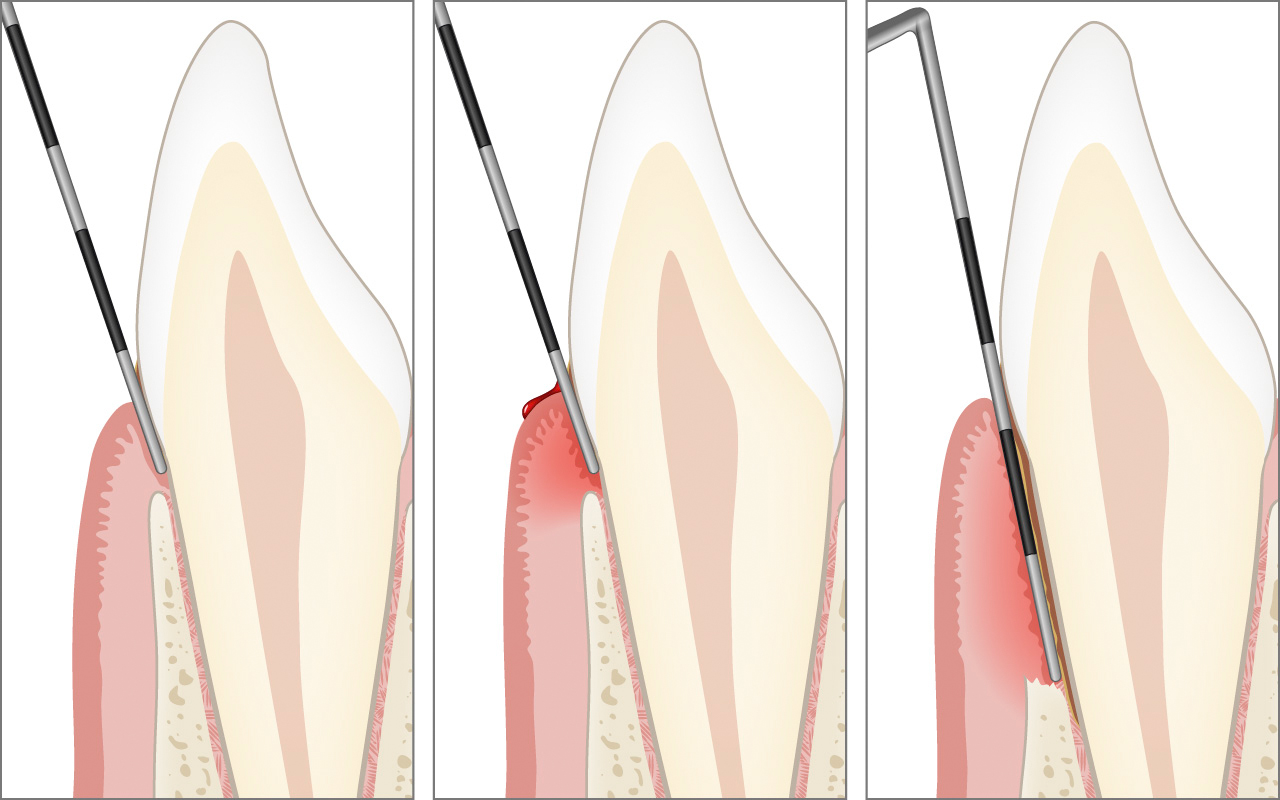
Self-assessment of the gums, for example, at home in front of the mirror, is insufficient for a correct assessment as it is not possible to determine oneself whether the tooth attachment has already been broken down due to gum inflammation. Periodontal pockets also cannot be self-detected.
Only the correct clinical examination in the dental practice with a so-called periodontal probe can provide information on whether the gums are healthy, whether there is gum inflammation (gingivitis), or whether a disease of the tooth attachment (periodontitis) is already present.
The measurements with the periodontal probe can show areas in the dentition with increased probing depths, which must also be assessed with radiographic findings.
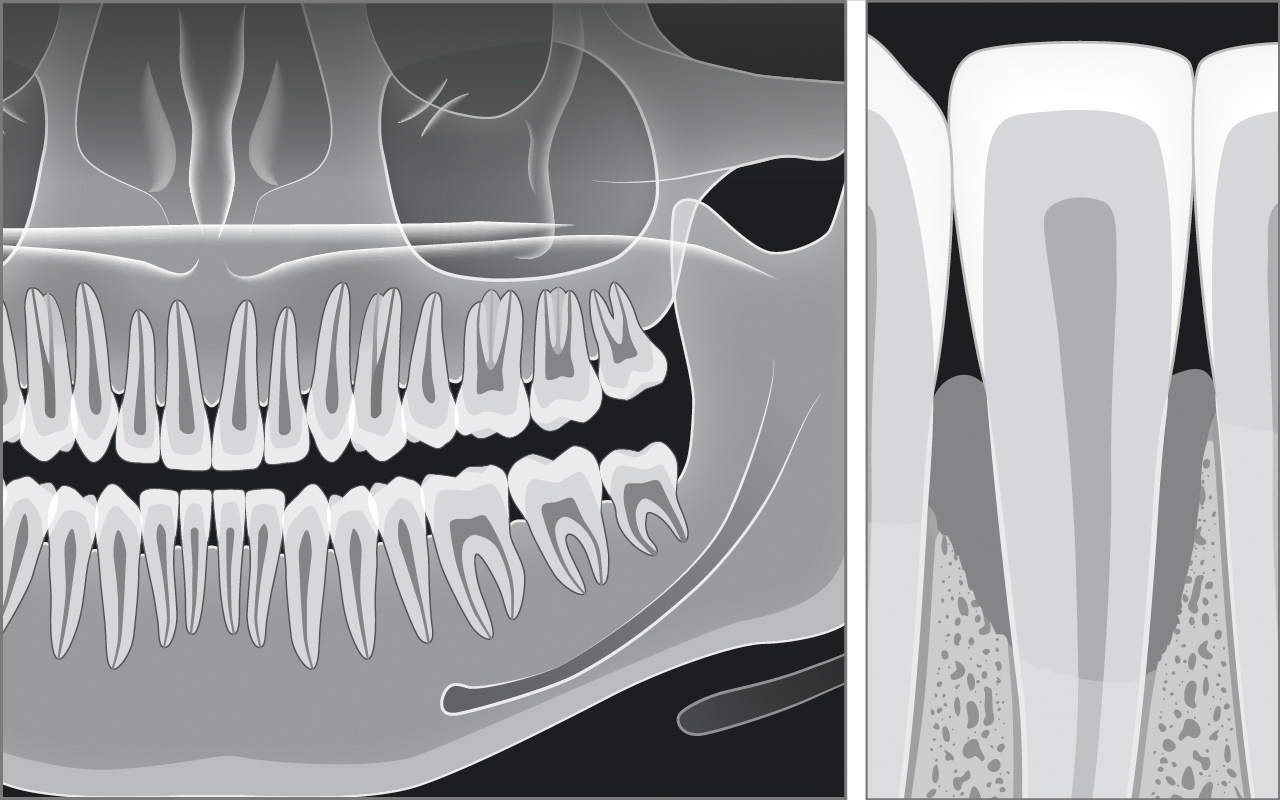
The diagnosis of periodontitis can only be clearly confirmed with the necessary radiographs. The choice of radiographs necessary for the diagnosis of periodontitis is made only after the clinical examination. This way, the exposure to radiation can be minimized.
A radiographic finding consists of two images (bitewing radiographs) in the simplest case and a so-called radiographic status with up to 14 radiographs or an orthopantomogram in the most comprehensive case. The radiographs taken must show the surrounding jawbone and allow the severity of the bone loss to be assessed.
Every radiograph from the dental practice must be examined for both caries and periodontitis.
For periodontitis to heal, all deposits (plaque and tartar) must be removed from the tooth surfaces in a professional dental cleaning.
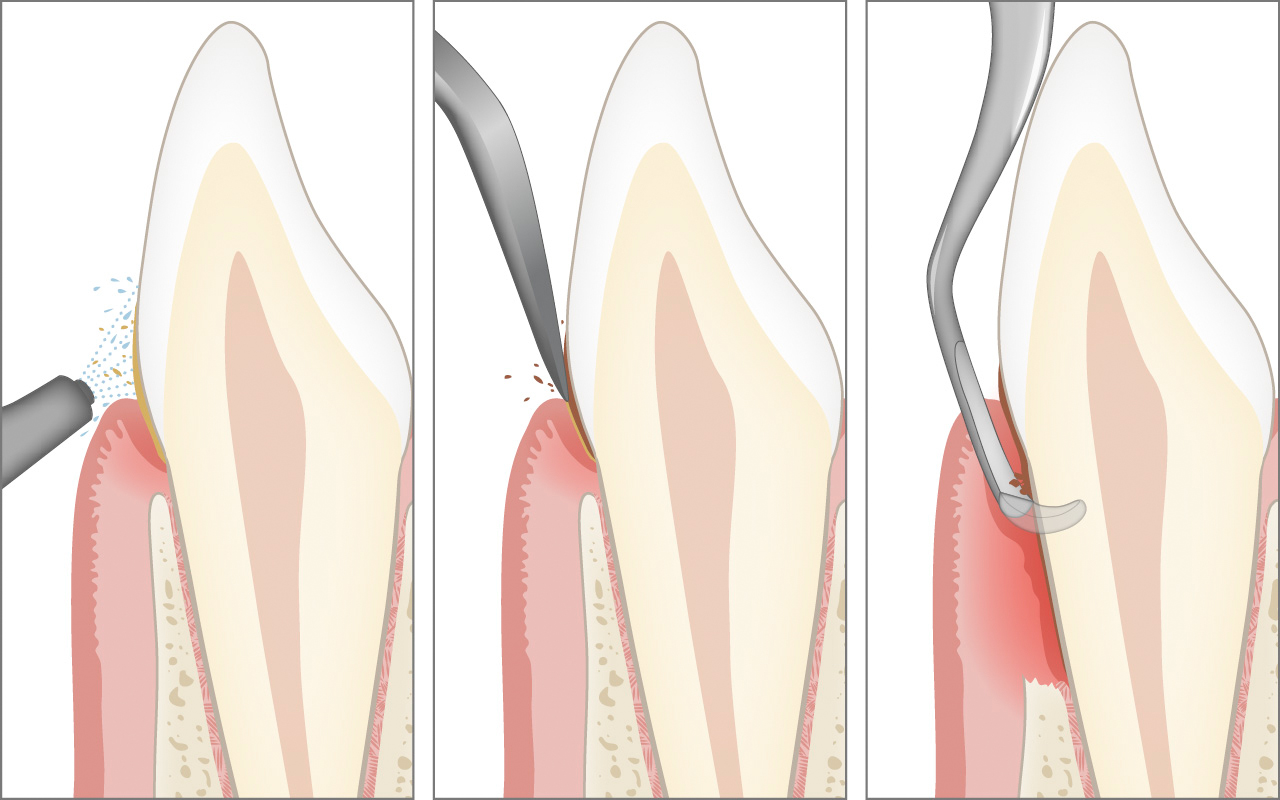
In professional dental cleaning, the dentist or dental hygienist systematically cleans all tooth surfaces. Particularly important in periodontitis is the cleaning and smoothing of the bacterial-infected root surfaces below the gum line.
All obstacles that can hinder optimal home oral hygiene are also removed. These include particularly tartar deposits above the gum line and protruding crown or filling edges.
An initial professional dental cleaning can rarely be completed in one session. For patients with advanced periodontitis, multiple appointments are scheduled for professional dental cleaning.
To prevent the accumulation of new bacterial deposits, periodontitis patients must learn to keep their teeth optimally clean.
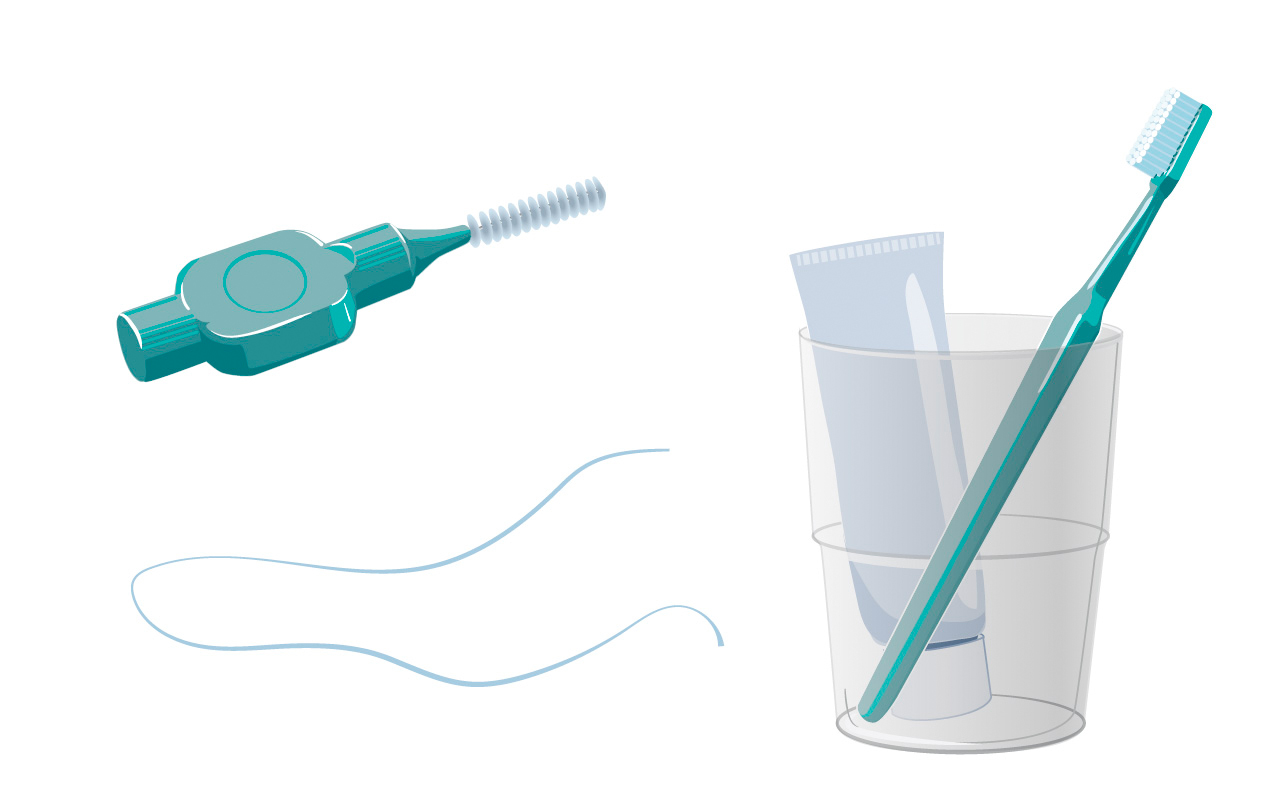
Regular home oral hygiene is not always easy to perform optimally. A significant challenge is, for example, cleaning the interdental spaces. For these areas, there are special oral hygiene tools, called interdental brushes. These are selected individually for each situation in the dentition, and their correct use is instructed to patients by the dentist or dental hygienist.
During the course of periodontal treatment, patients learn an oral hygiene technique adapted to their situation. Good cooperation with optimal home oral hygiene determines the overall success of the treatment.
For more information on oral hygiene instructions, see www.mundhygiene-instruktion.ch.
One to two months after professional dental cleaning, the treatment result is reviewed, and decisions are made on how further professional care should be structured.

One to two months after professional dental cleaning, the treatment result is reviewed. In this follow-up, it is also checked whether patients can clean their teeth well with home oral hygiene.
With good home oral hygiene, a significant reduction in gum inflammation and a shrinkage of the gums can be expected. Even if the surfaces of the tooth roots are exposed, ideally, fewer residual periodontal pockets with probing depths of more than 3 mm should be measured. In such cases, the periodontal treatment can be completed, and the healed situation can be professionally maintained through regular appointments with the dental hygienist.
After periodontal treatment, professional long-term care with the dental hygienist is planned. The frequency of these sessions also depends on the so-called residual periodontal pockets.
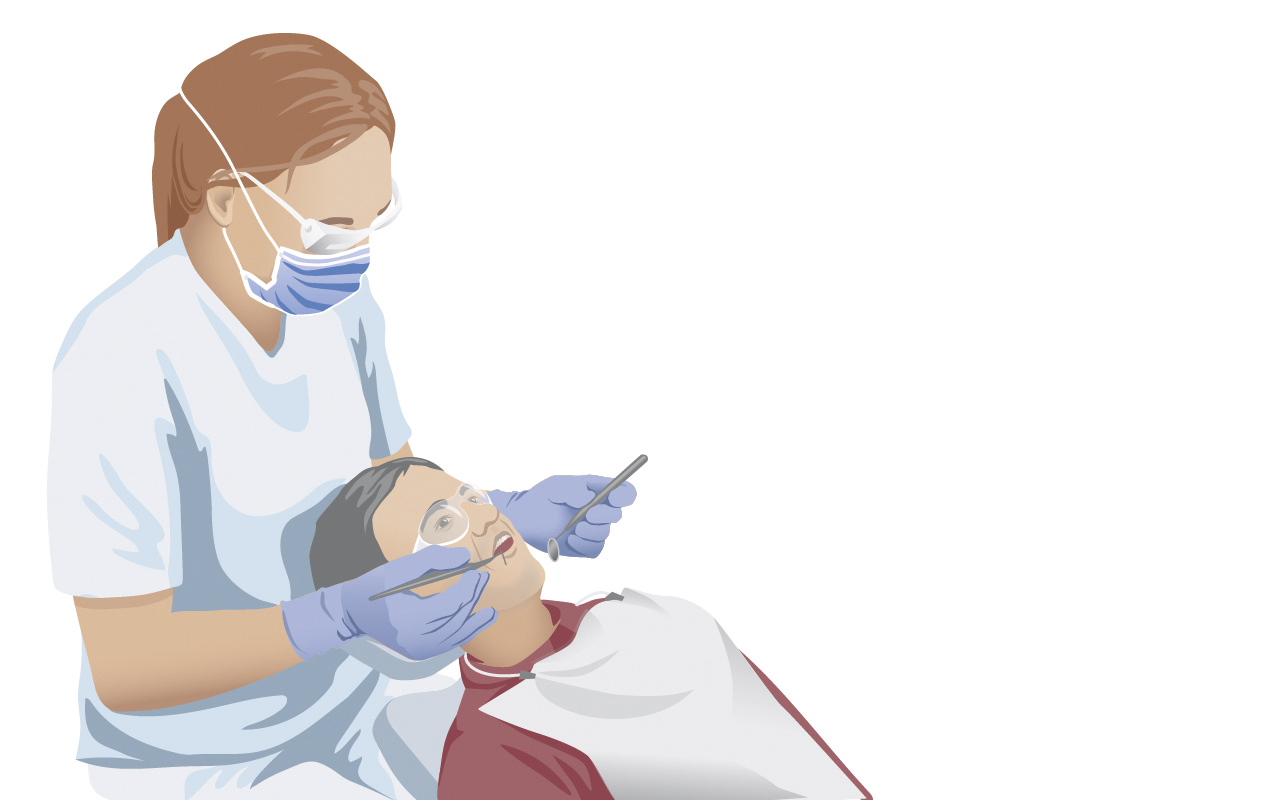
After periodontal treatment, long-term success over several years is only guaranteed if patients perform optimal home oral hygiene and prevent their gums from becoming inflamed again due to new bacterial deposits.
For optimal long-term success, ongoing professional long-term care with the dental hygienist is also essential, so that any recurring problems can be detected and resolved in good time.
The interval between these dental hygiene sessions is usually three, four, or six months. The frequency is based on the quality of oral hygiene, the extent of gum inflammation, and the presence of residual periodontal pockets.